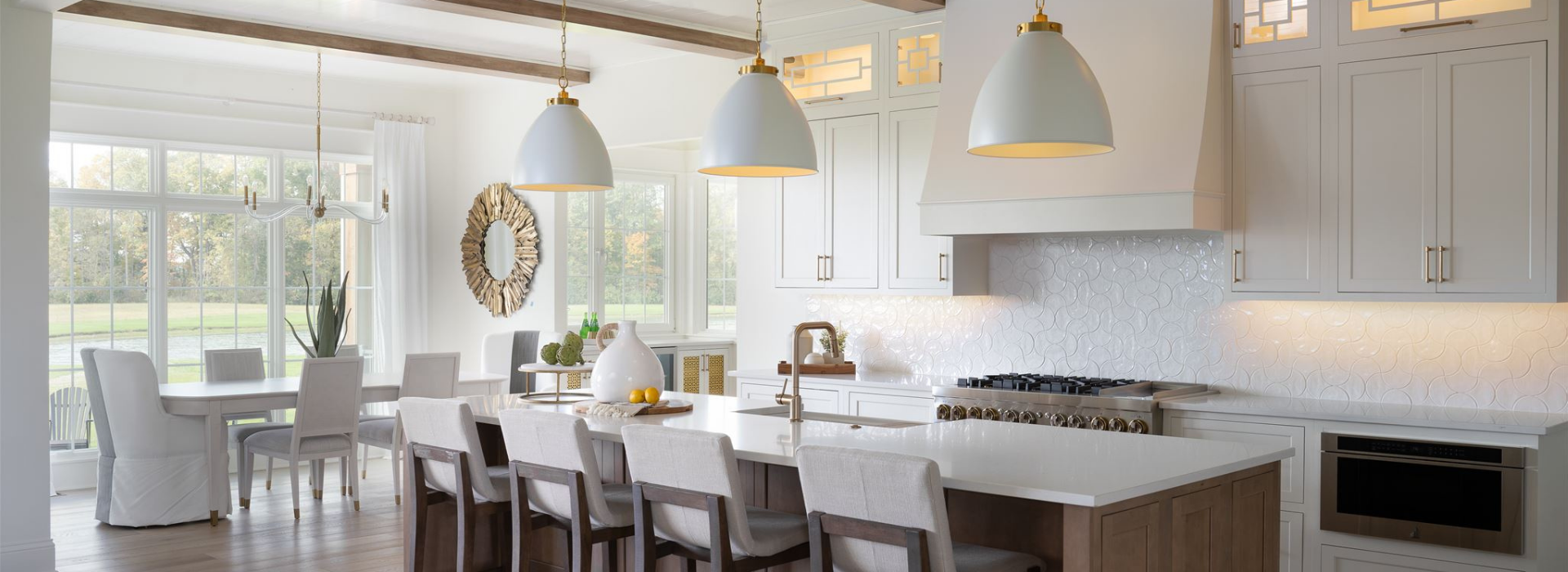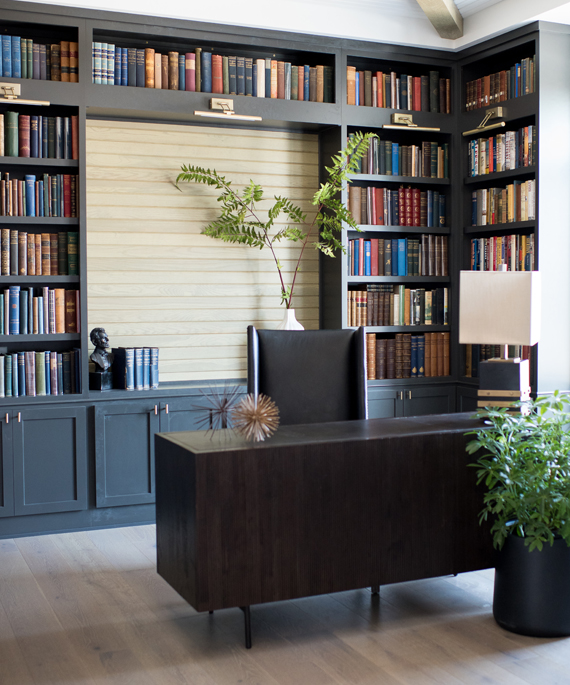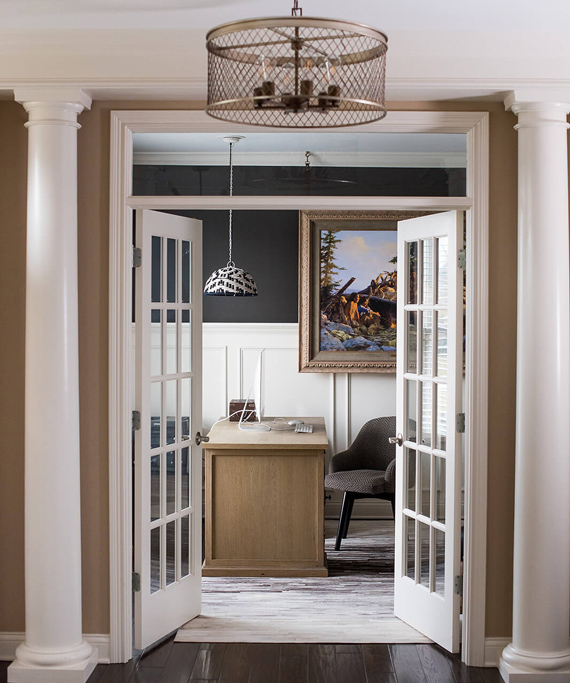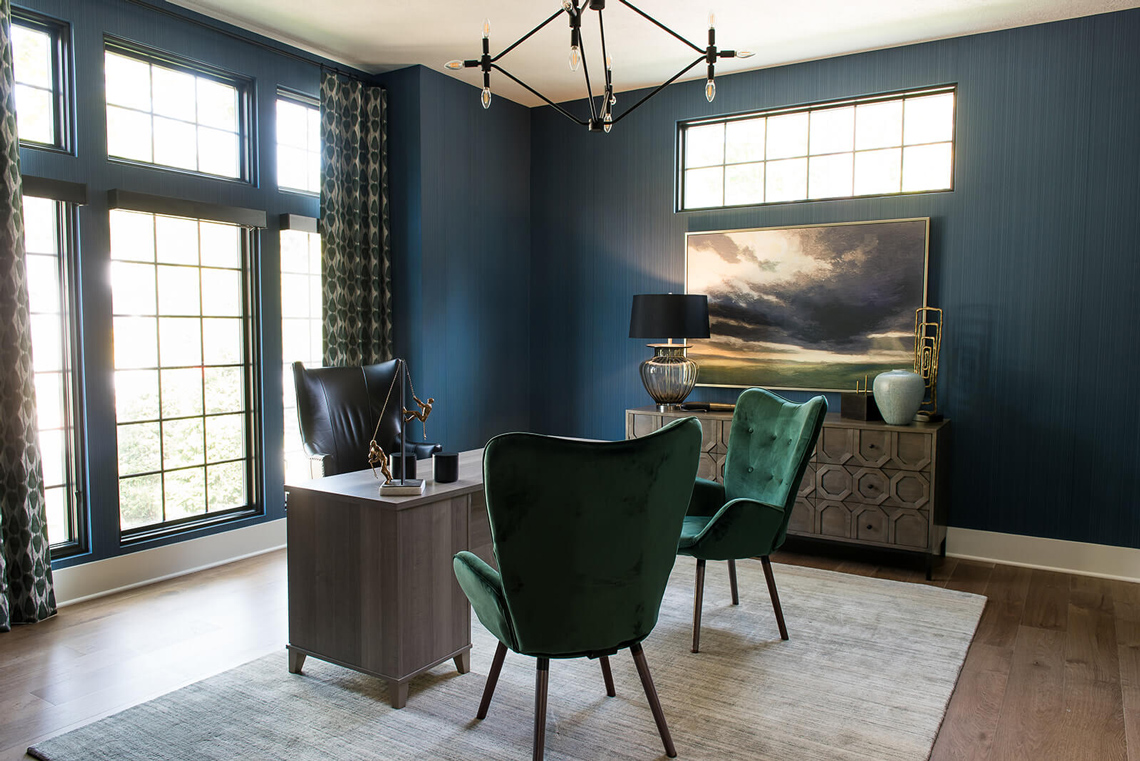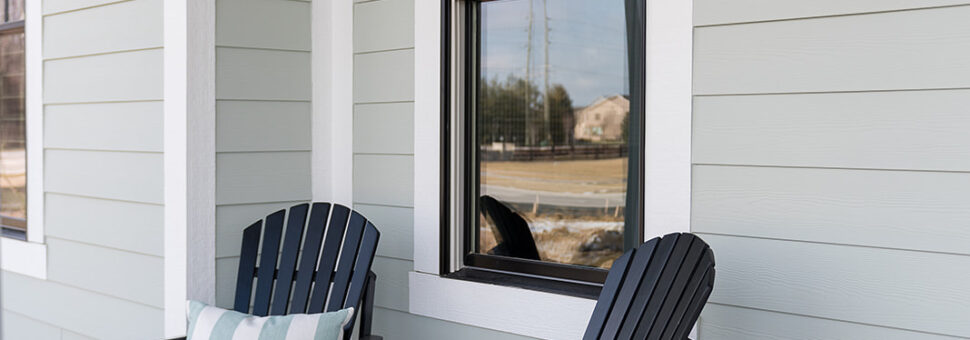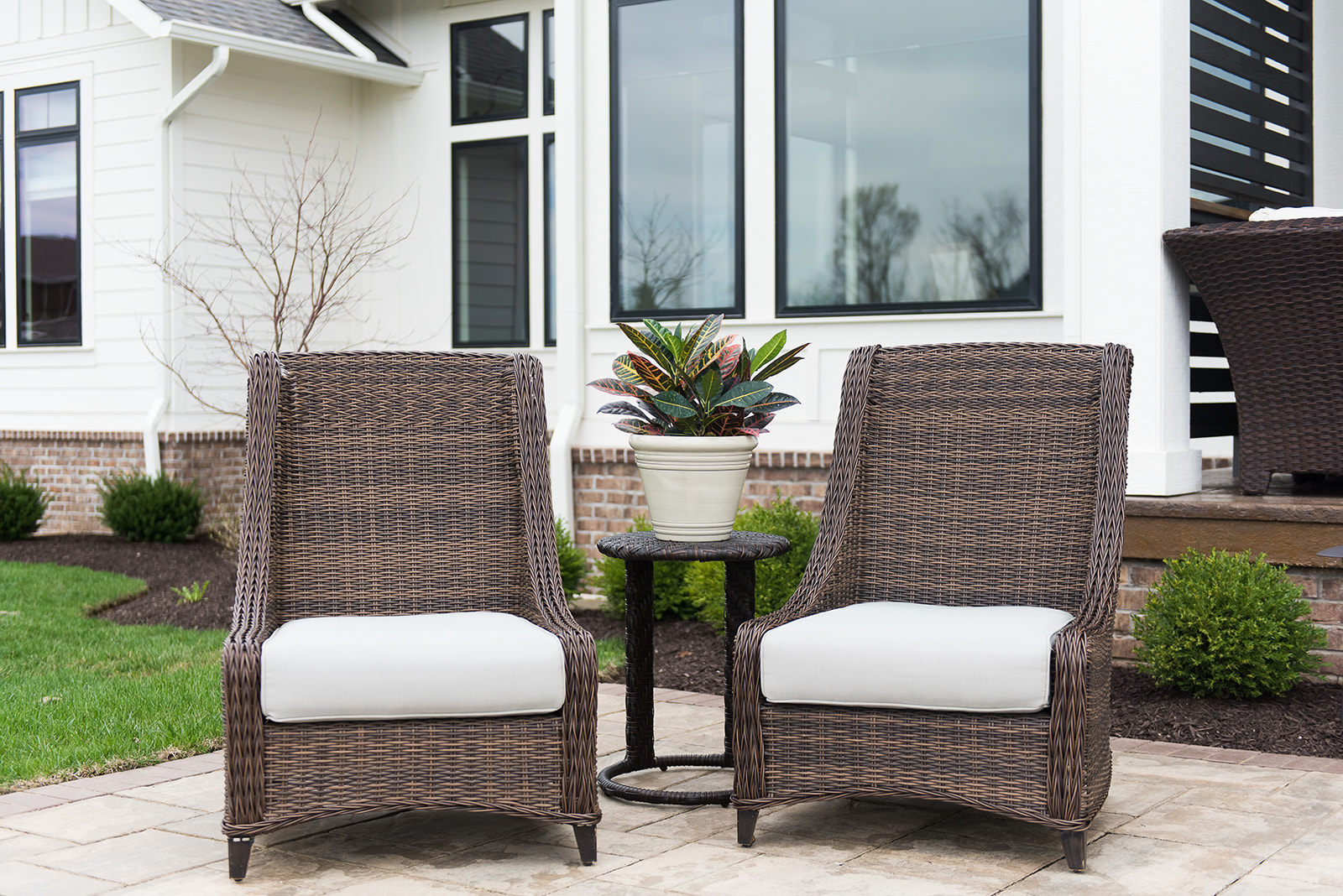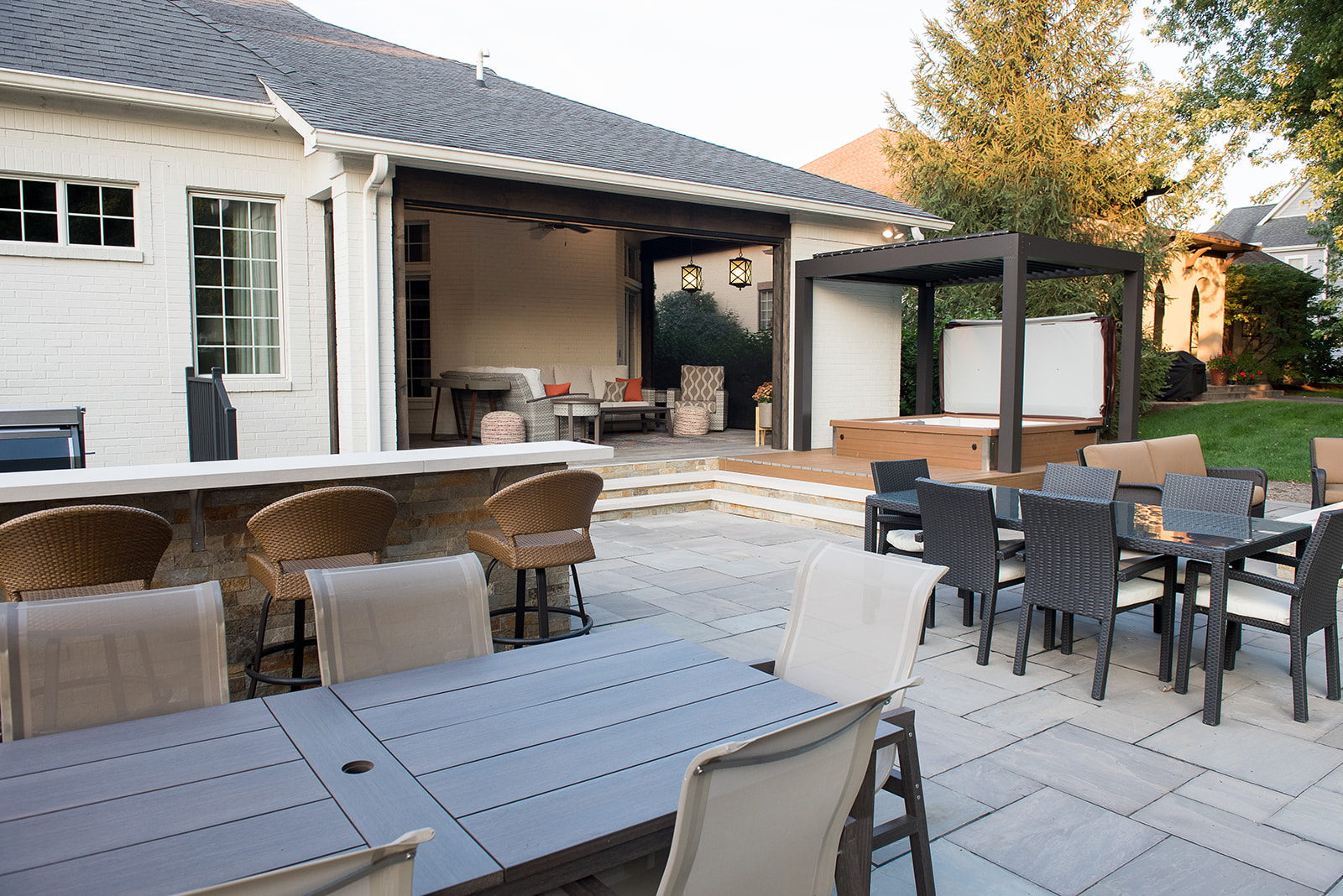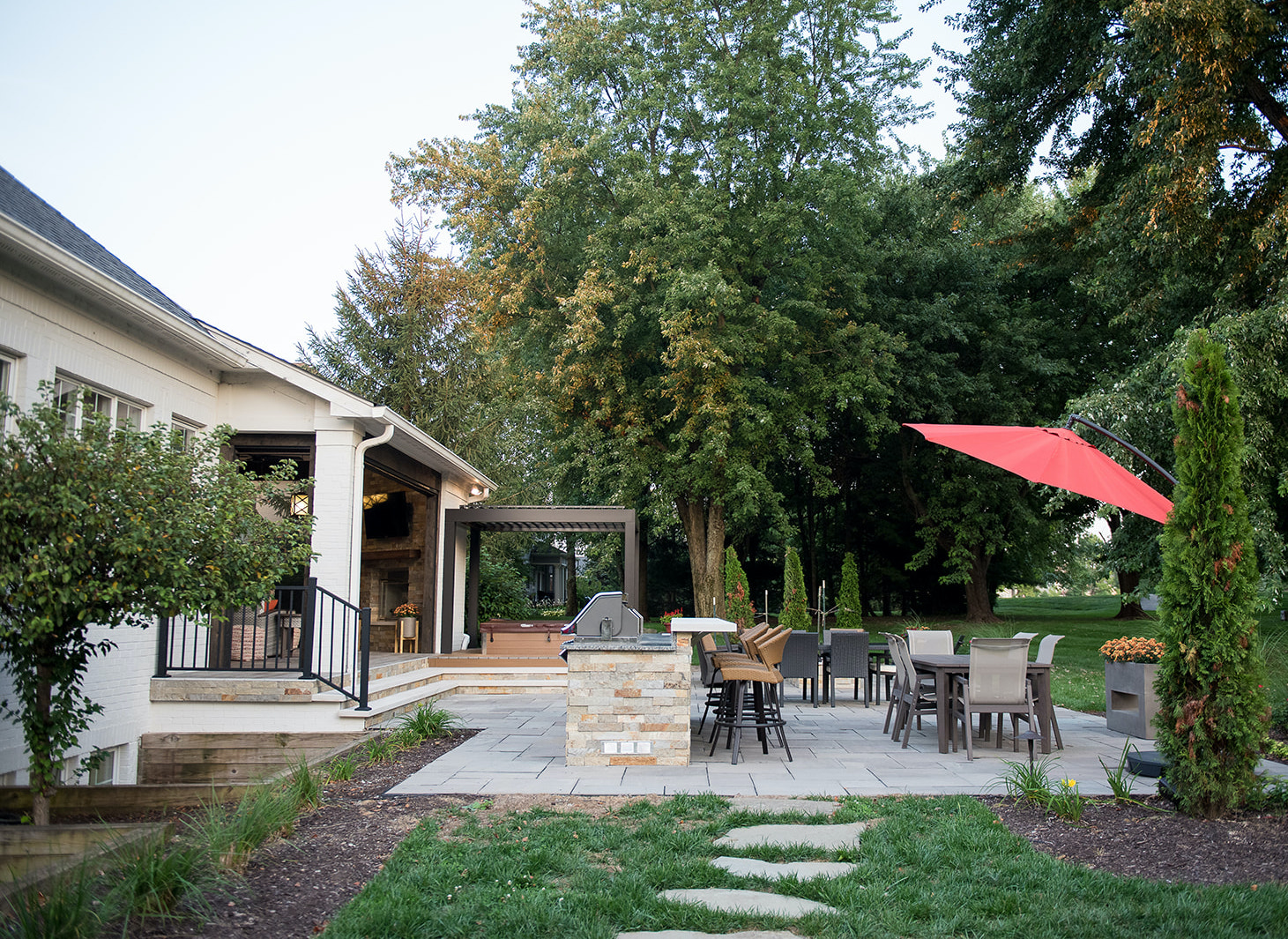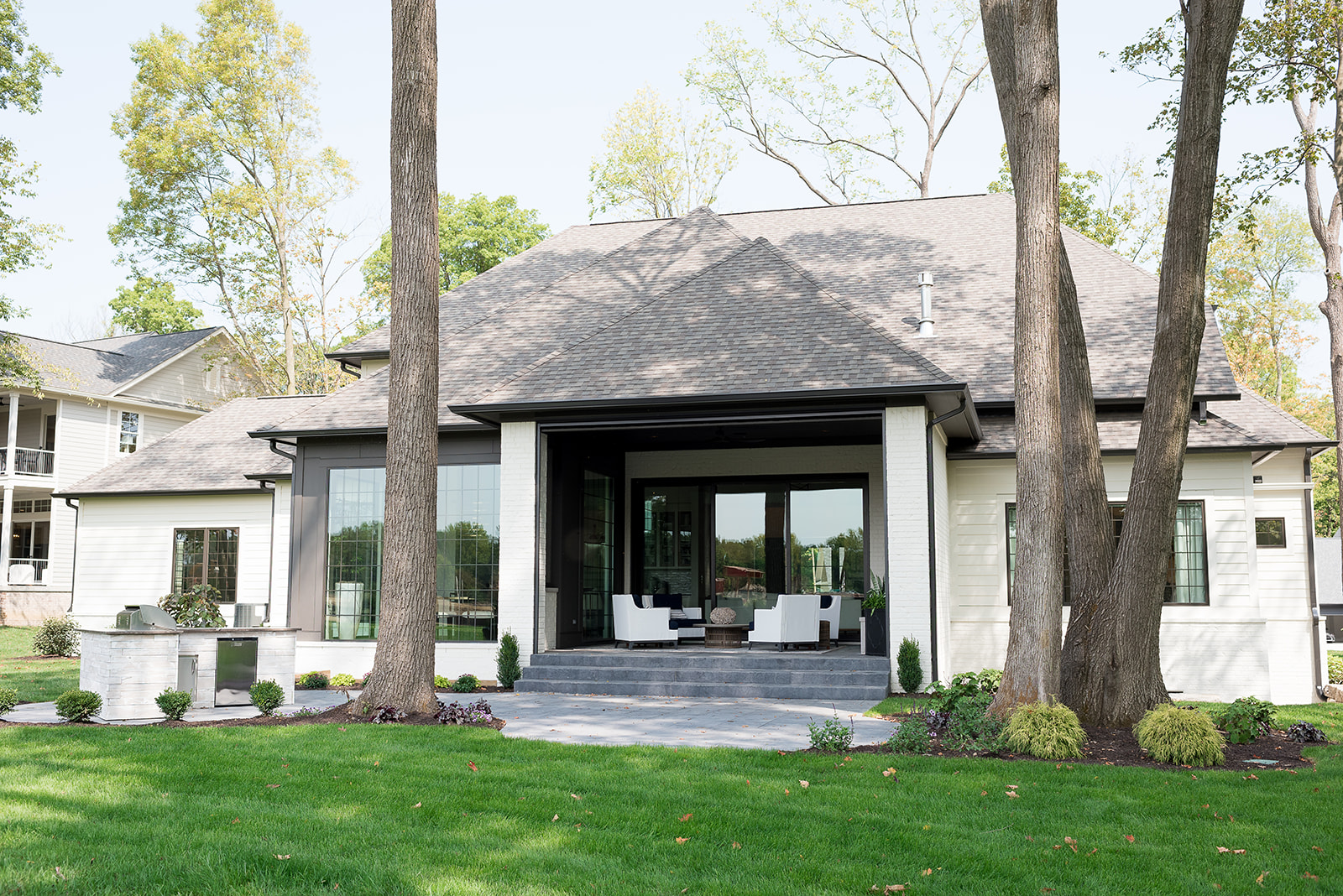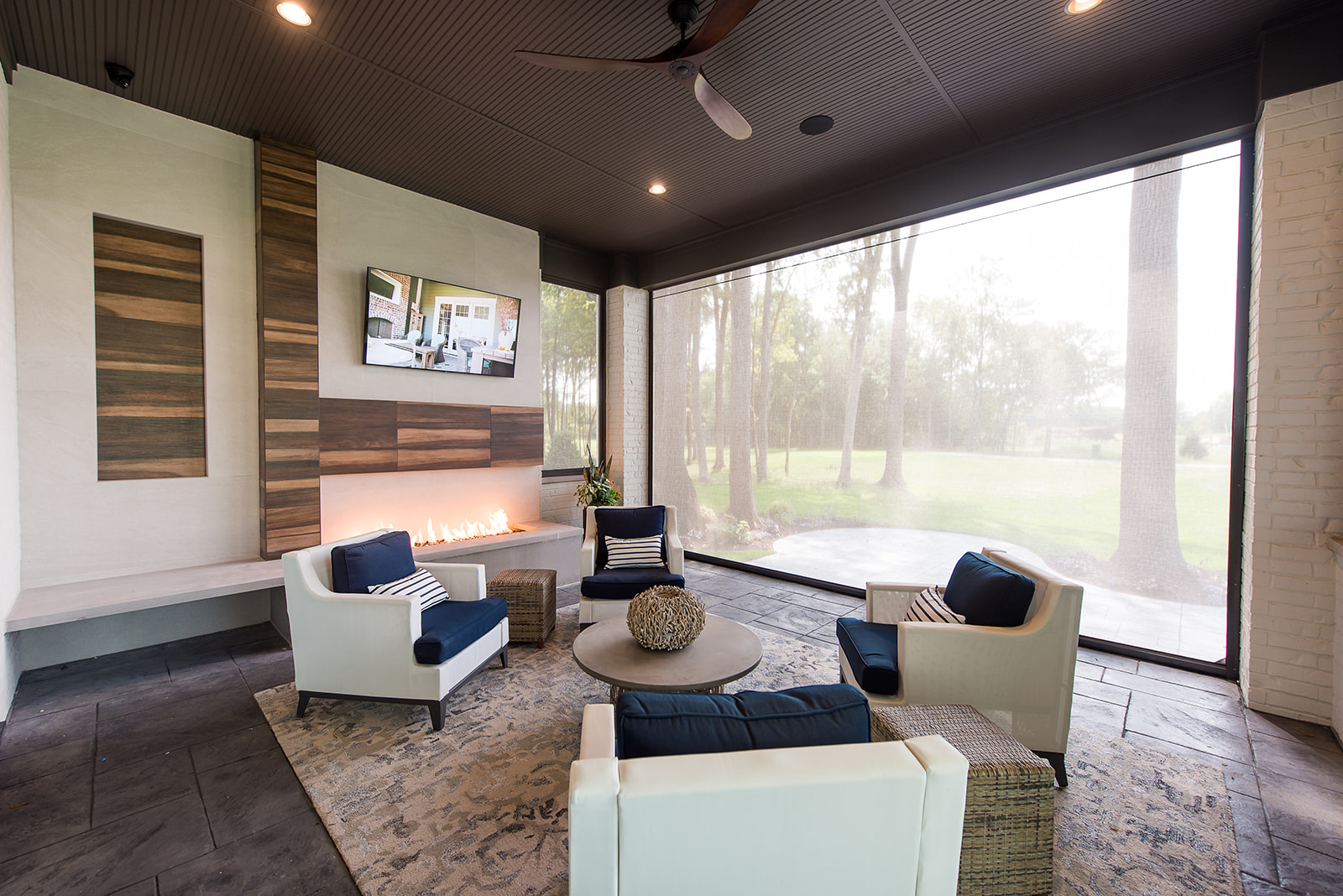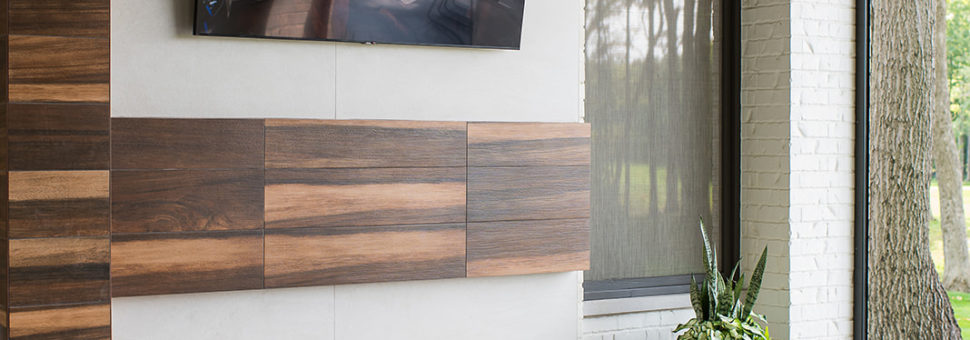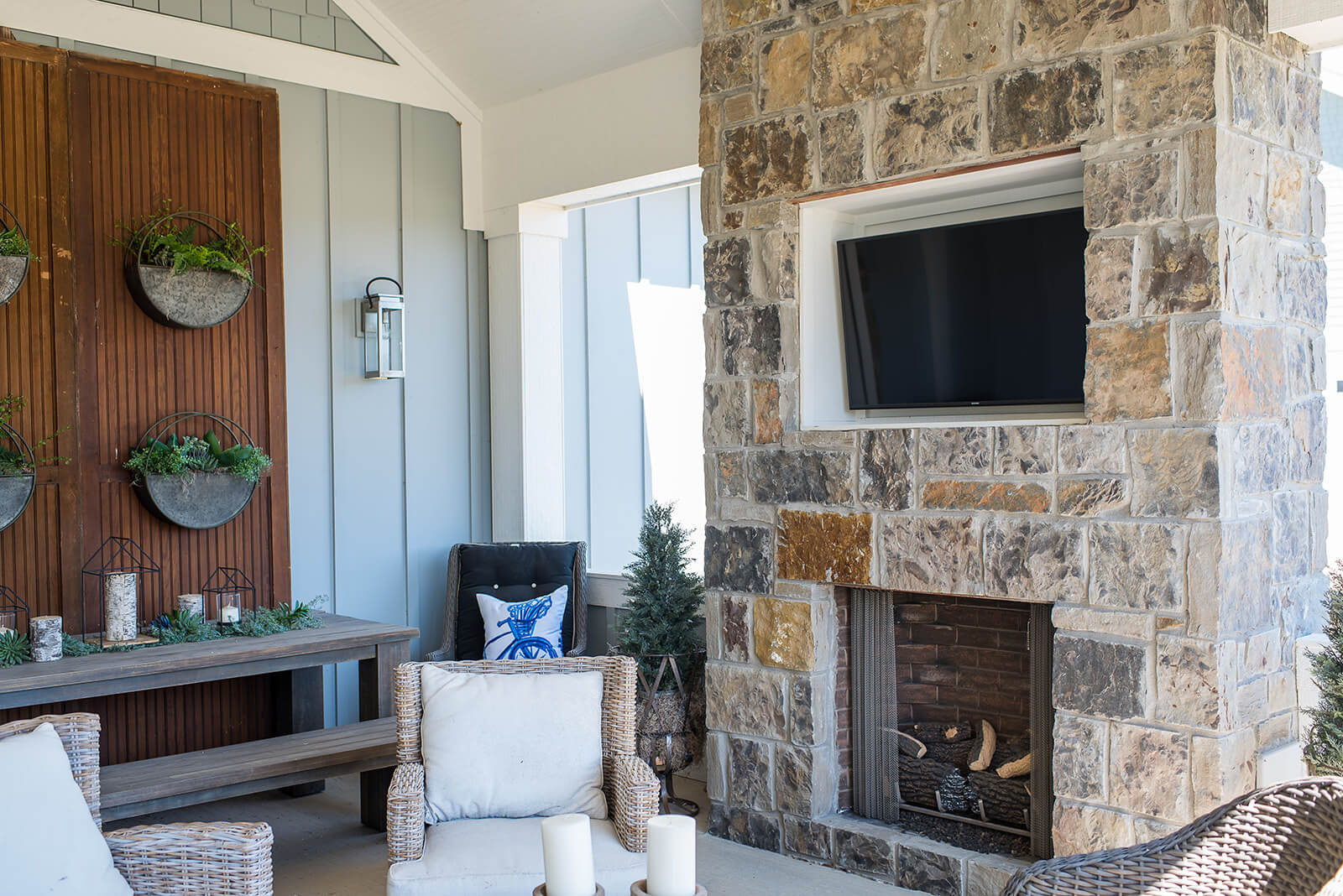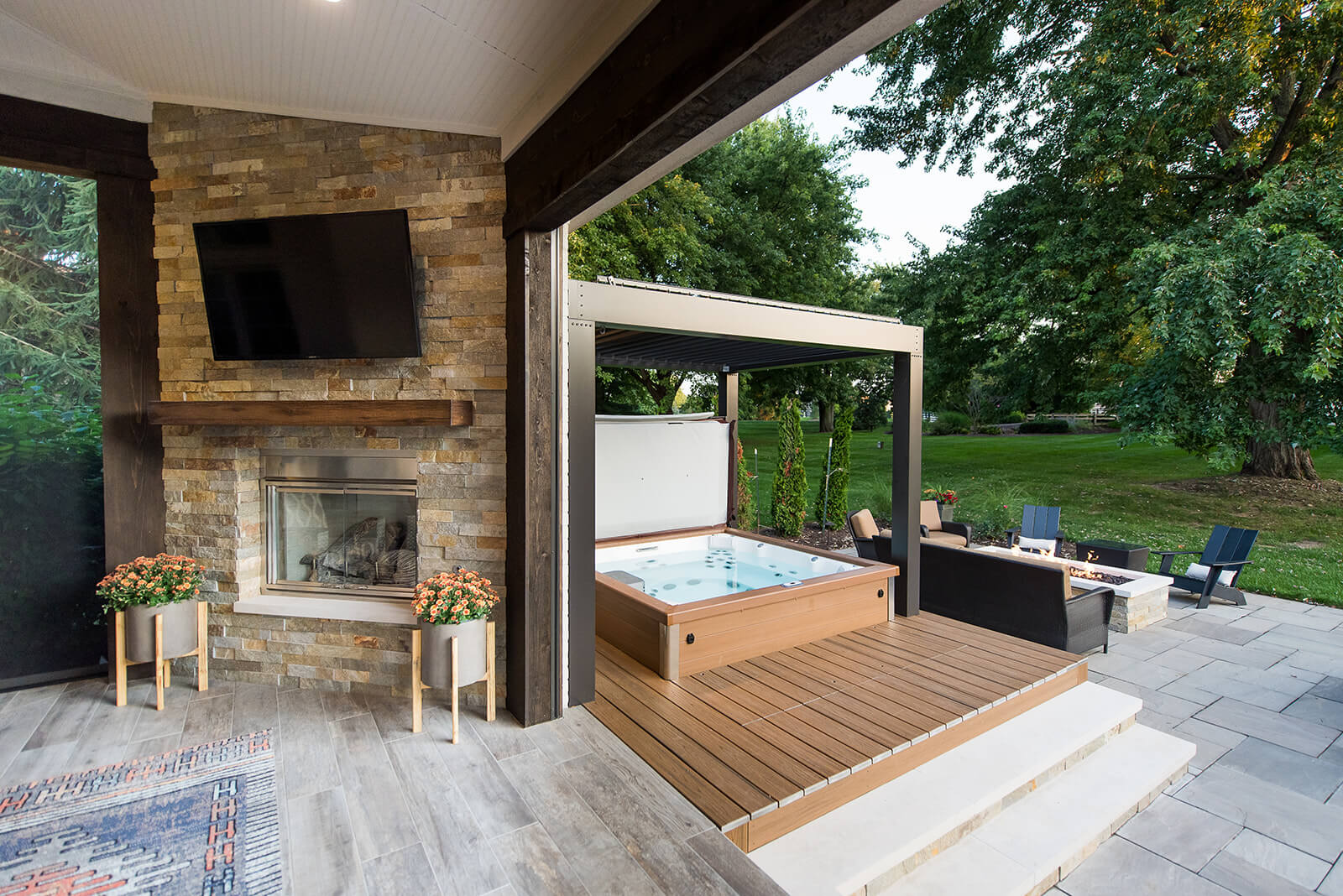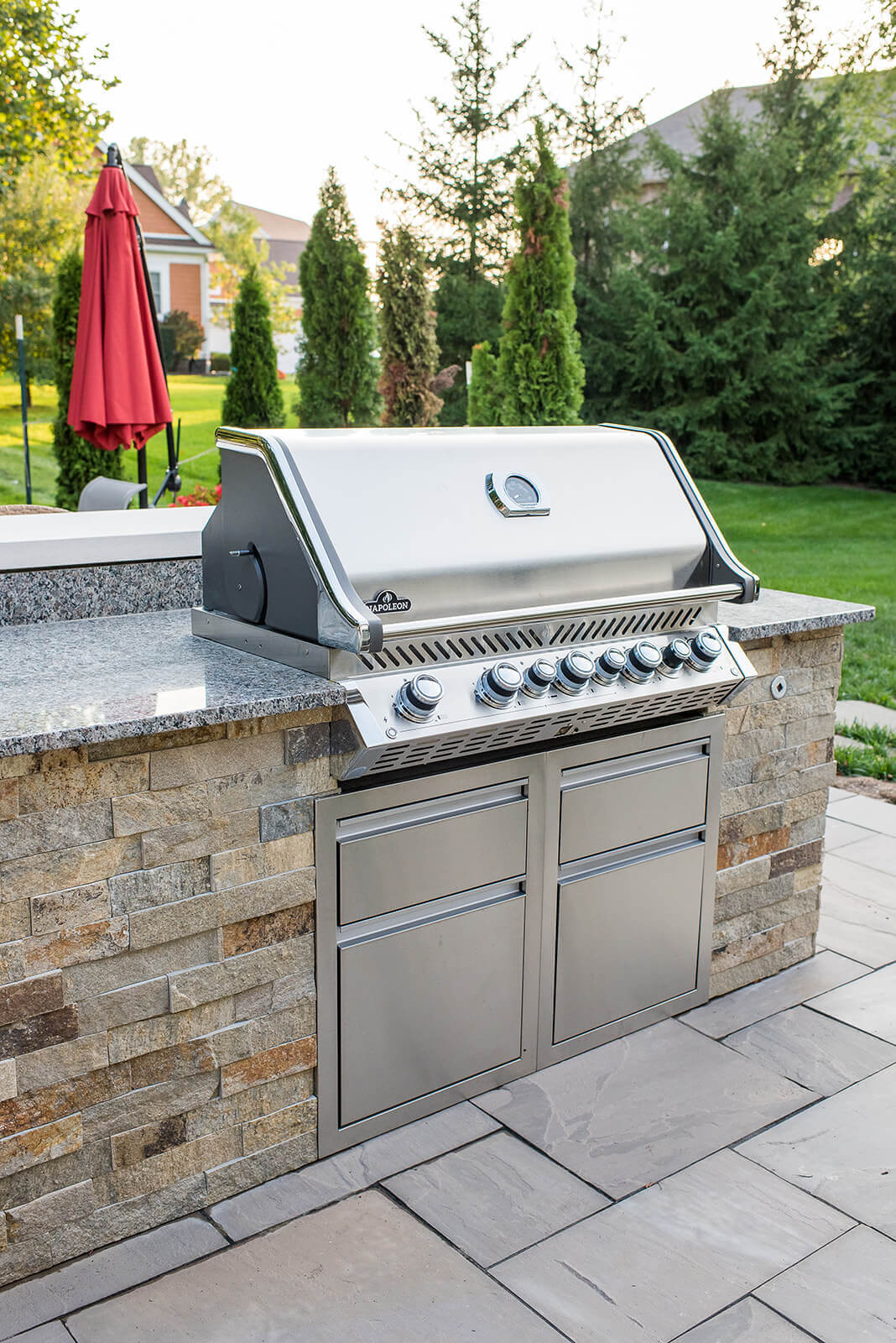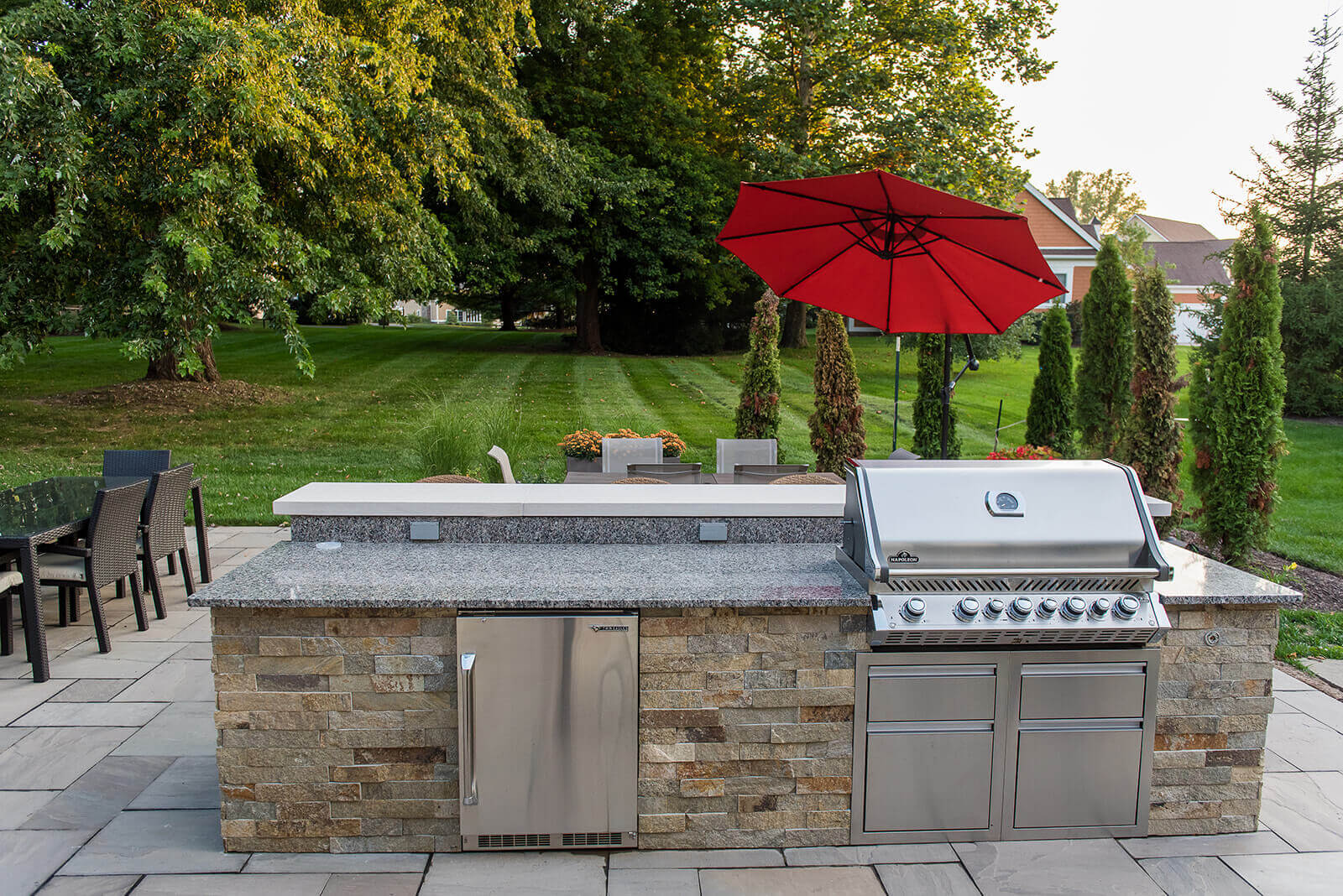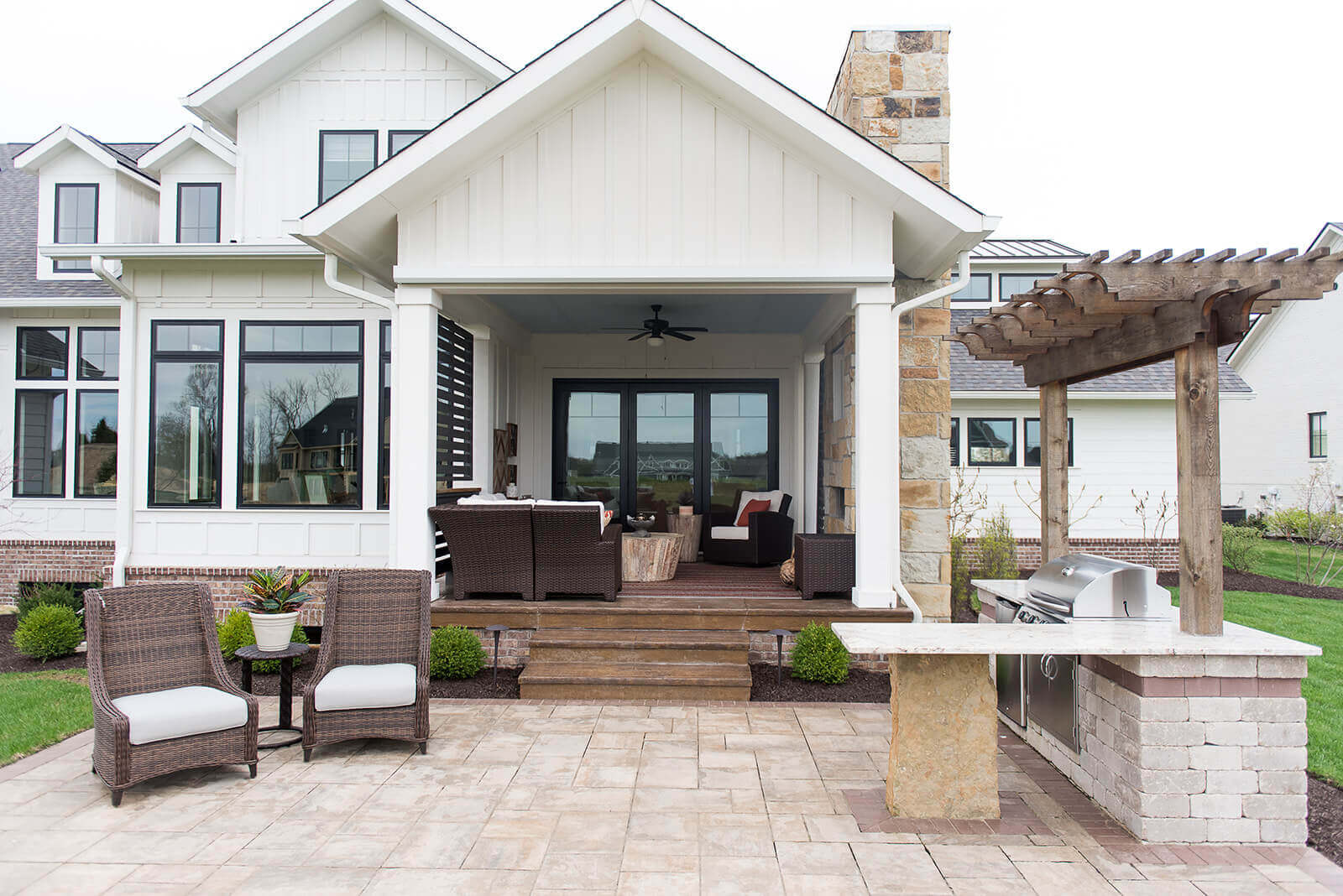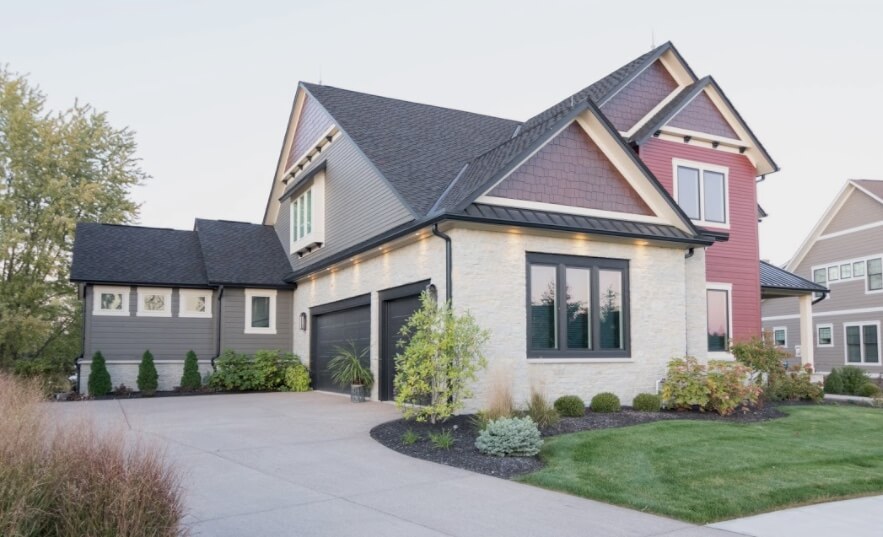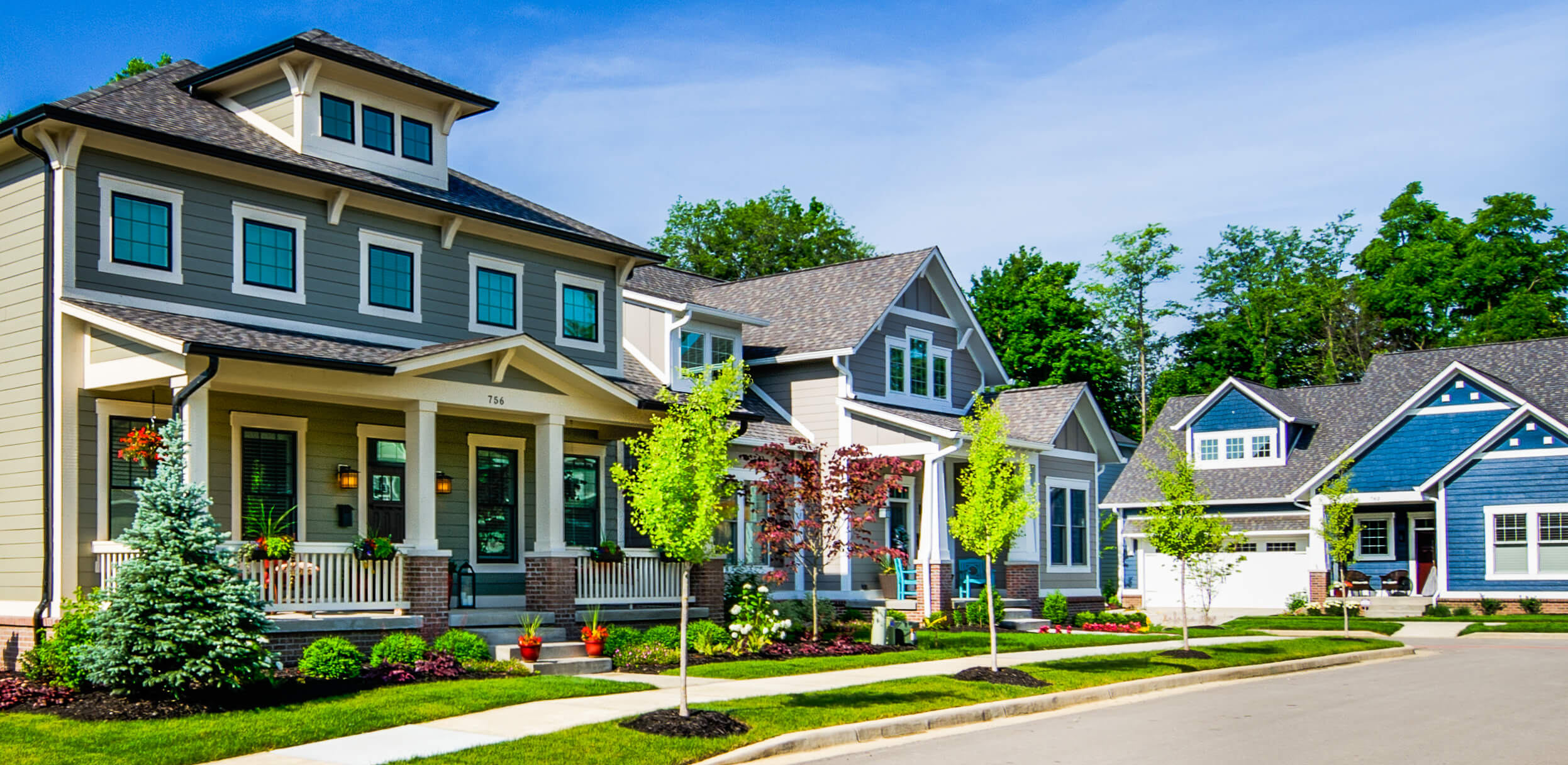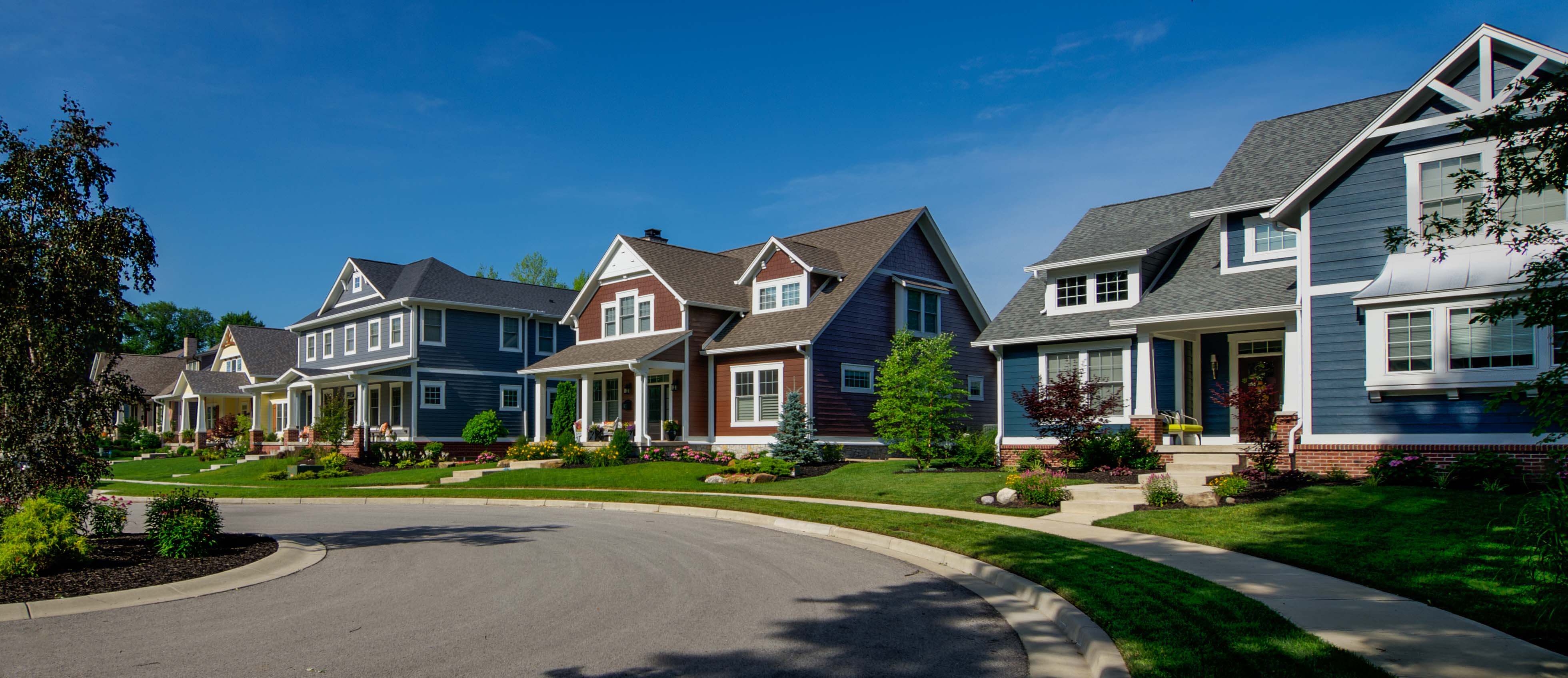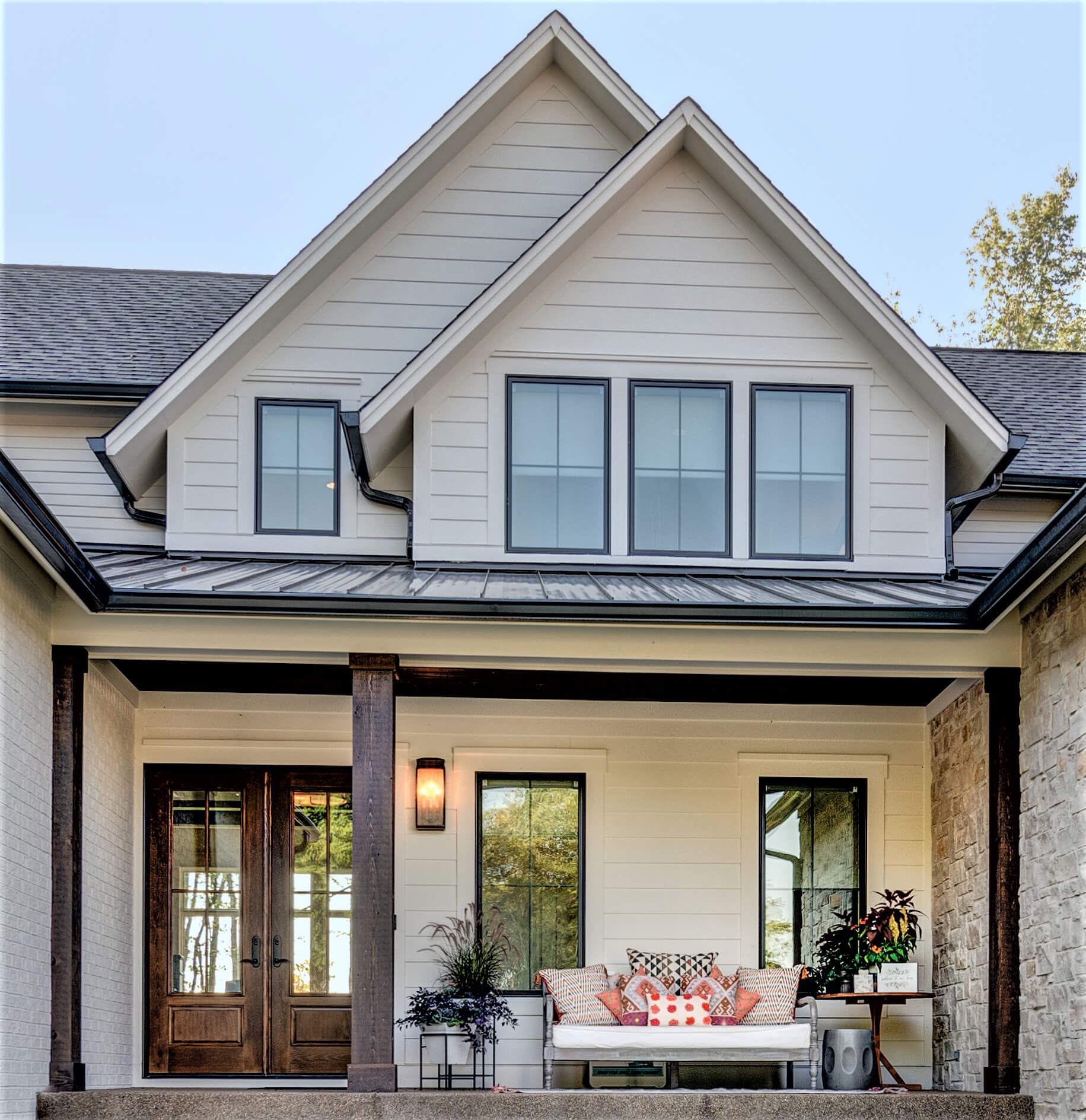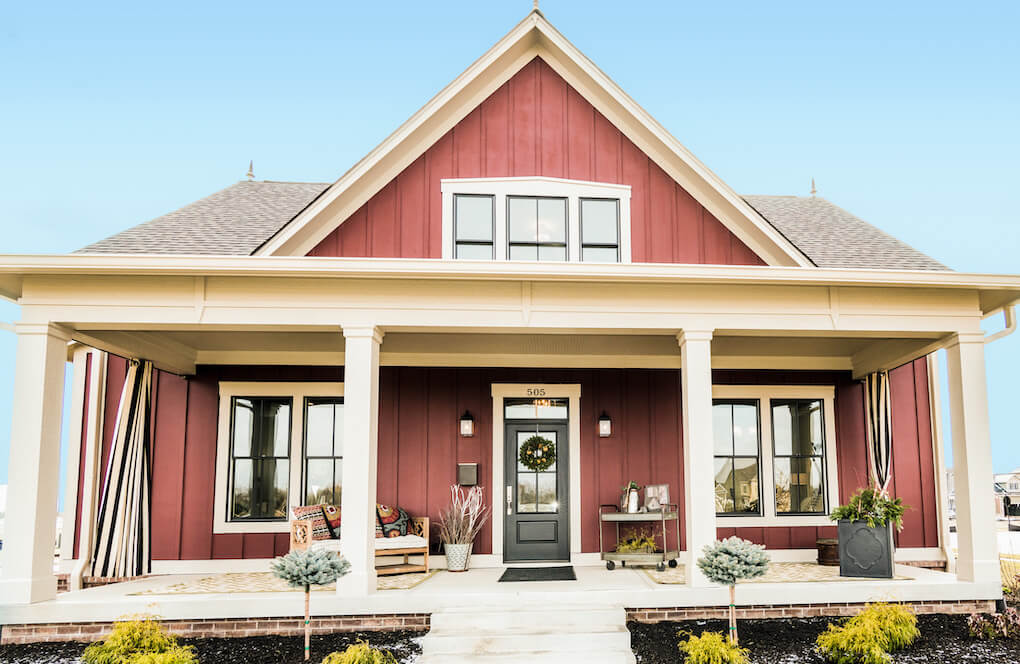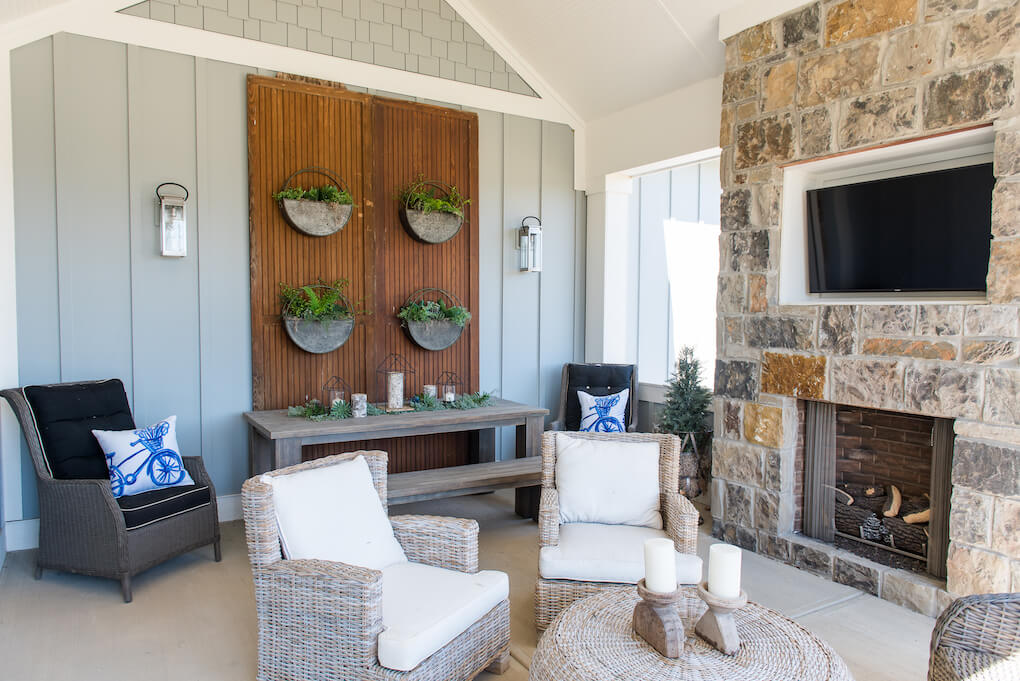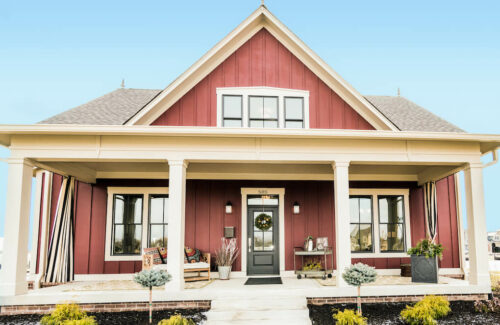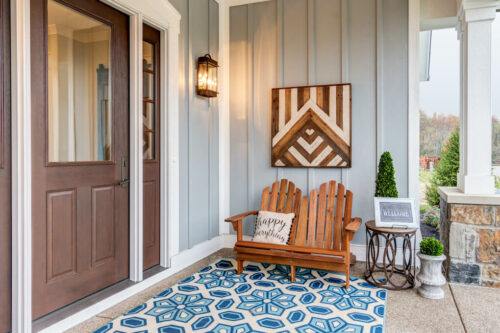This season is a huge reminder of the need for an entertainment-friendly home. There are countless ways to ensure that your home is prepared to entertain, and much has to do with who your guests are. If you have elderly family members or others with mobility issues, even the occasional step can act as an impediment. And, on the other end of the age spectrum, if you have unruly little ones around, nothing tends to lift their parents’ spirits as much as having a nicely decorated basement outside of noise range from adult spaces.

Overlooking the particularities that you should be thinking about for your specific friend and family circles, let’s look at the essential entertaining spaces and how to improve them to make them more functional, attractive, and enjoyable.
Entertainment-friendly Living Spaces

As the primary gathering spot, your living space, whether open-concept or a traditional separate living room, needs plenty of comfortable seating for guests. Have a good combination of sofas, armchairs, sectionals, ottomans, and maybe even floor cushions and bean bags for the young in spirit. Add a good mix of coffee and side tables so people have enough space to lay down their snacks and drinks safely.
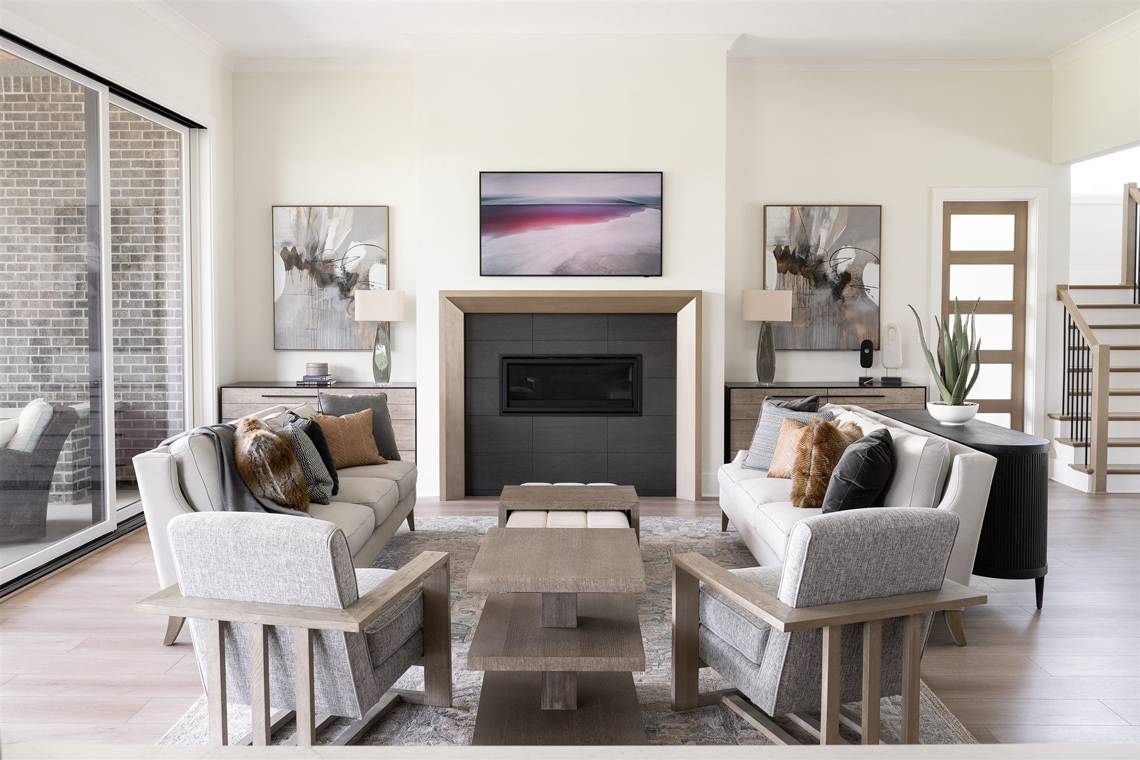
Large groups inevitably split into multiple conversations, so carve out physical spaces for socializing. Utilize focal points like a fireplace, art, or tv to build zones around.
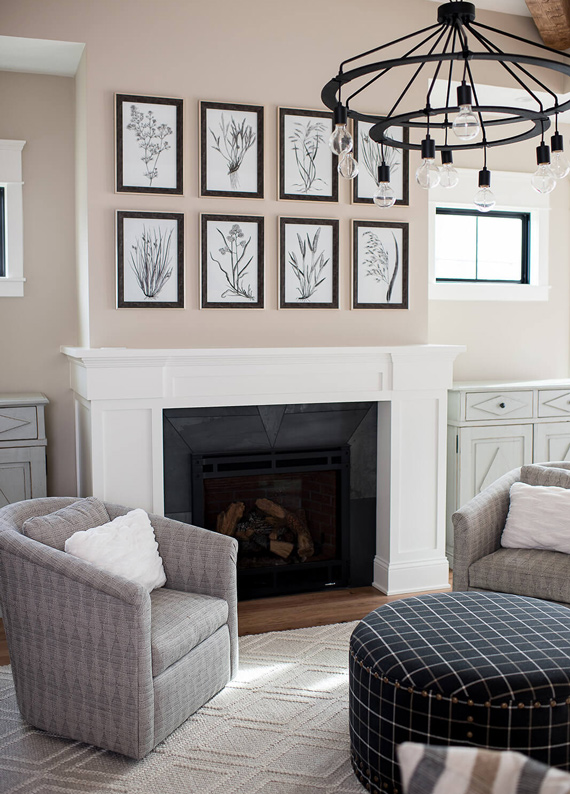
If you have a patio and if weather permits, ensure it is easily accessible to guests using sliding doors that open up and out of the way. The ease of stepping through spaces determines where people congregate, so you might want to share your layout issues with an experienced designer.
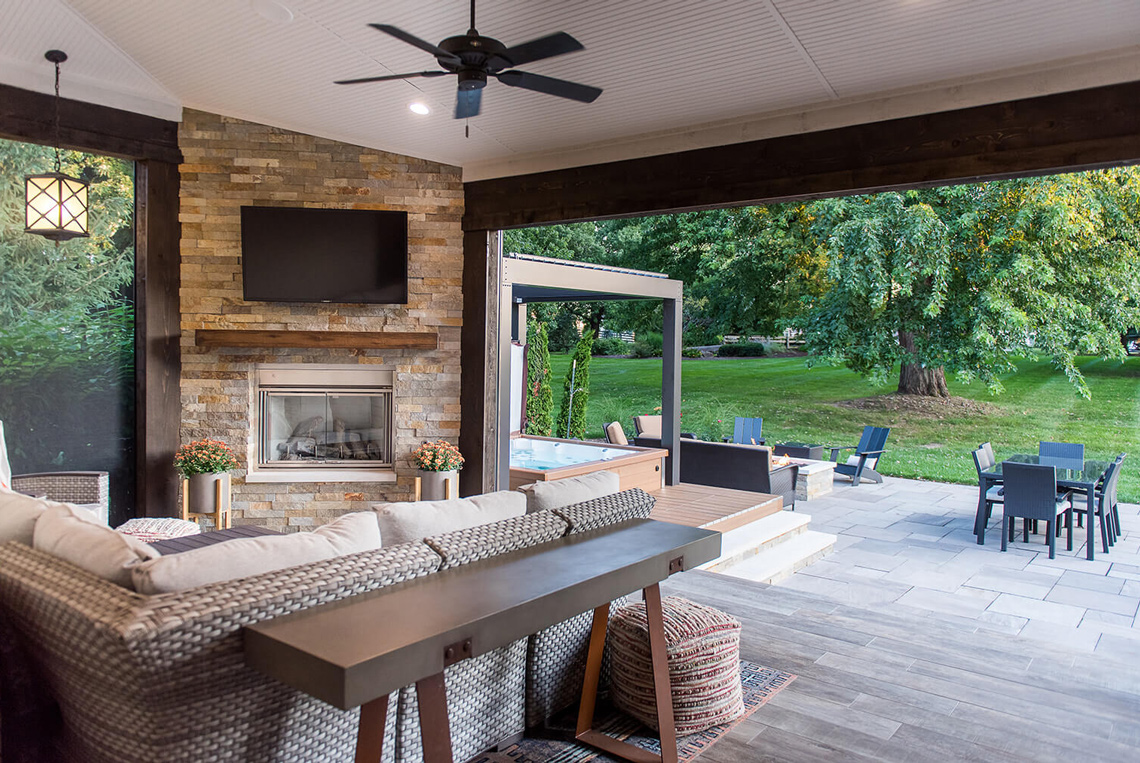
A High-performance Kitchen
Most get-togethers and celebrations happen around food, making the kitchen the heart of all the action. Ideally, it is best to have all the food ready before your guests come in to keep your attention on the bigger picture – recognizing and tending to their needs and enjoying socializing with them. Thus, you need an efficient, high-performance, and incredibly functional kitchen.
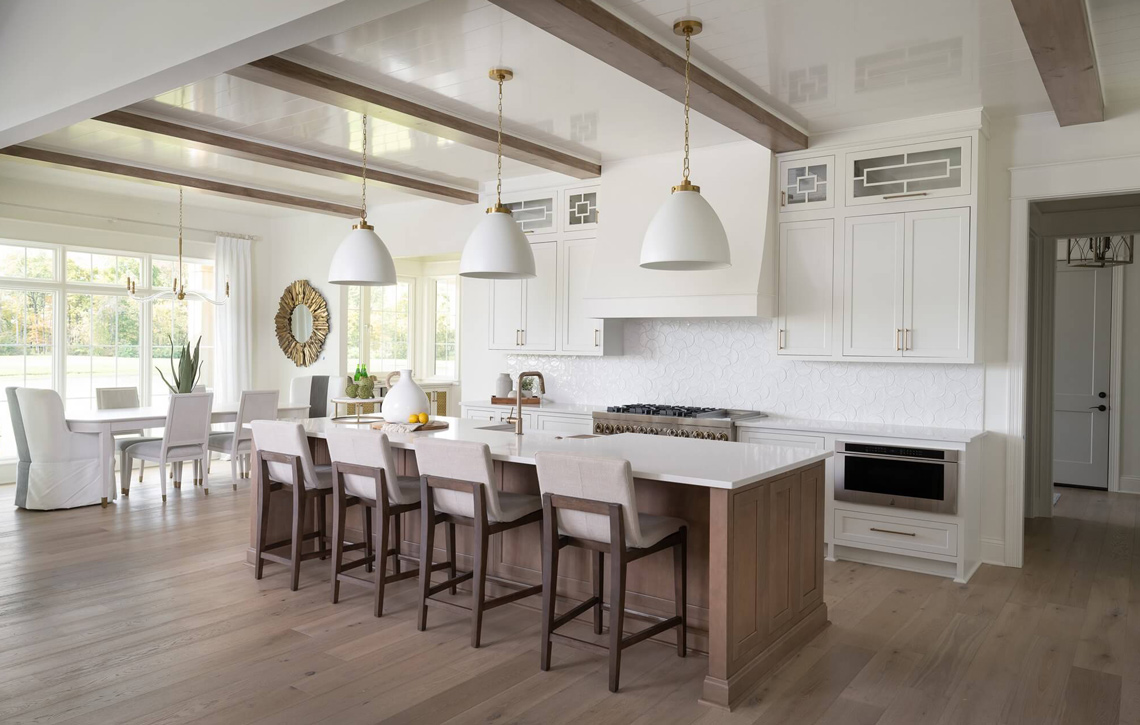
Open-concept kitchens are great if you don’t regularly use paid help or if you tend to host smaller gatherings. Consider incorporating two islands if your kitchen is large and you entertain often. One can be a prepping station, the other for serving and gathering. Demarcating zones this way can help keep the cook’s space free of guest traffic.
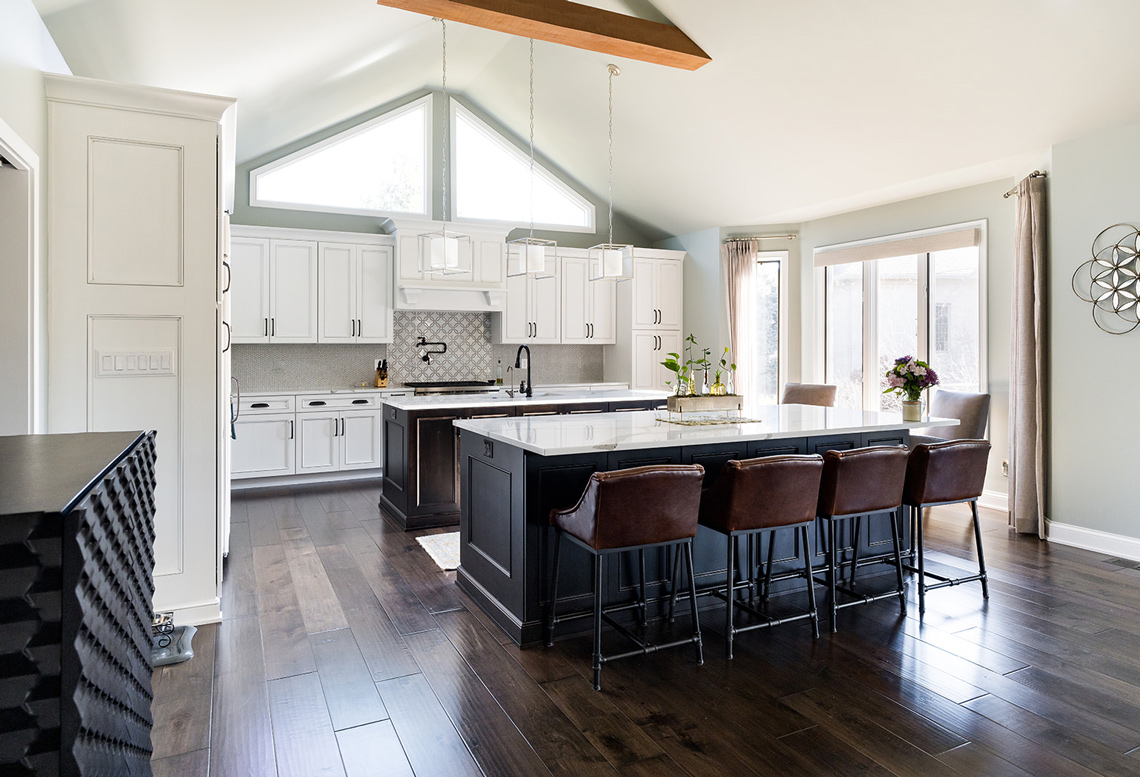
While it doesn’t apply to everyone’s lifestyle and budget, it should be noted that those that regularly utilize paid help while hosting – whether a personal chef, housekeeper, or caterer – would benefit from having a kitchen that is completely independent of social spaces. Such prep kitchens or sculleries keep the mess and noise away from your guests. They are also popular places to have warming drawers, a second refrigerator, a wine cooler, and storage space for your fine china.
While many of the kitchen functionality issues are obvious for entertaining – including the need for more fridge and oven space, bigger sinks, and more dishwashing capacity – one often overlooked consideration is having an external blower for your range hood, as they produce much less noise, which is, of course, perfect for a party!
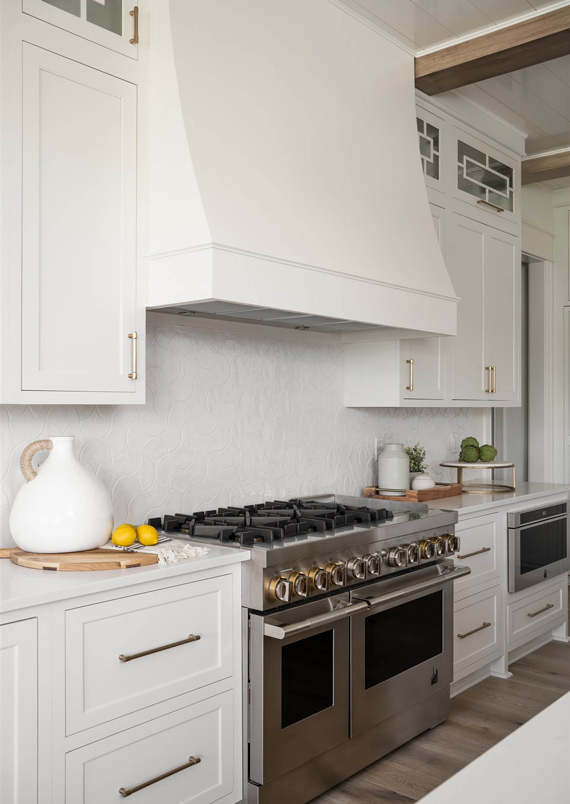
Gathering Around the Table
As professional interior designers (and builders), we realize that each homeowner has differing needs and tastes, while each home has different challenges and opportunities. However, here we’ll provide some general suggestions to help you make your dining space look bright, welcoming, cheerful, and attractive.
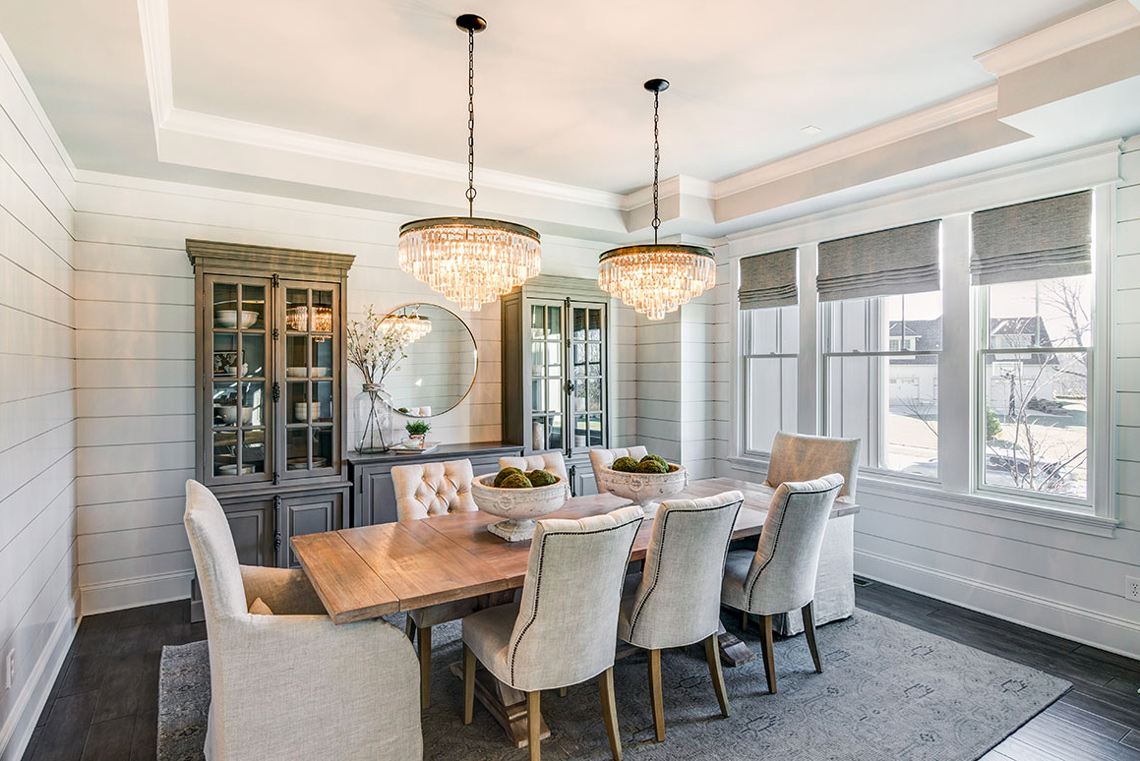
Choose neutral colors like white and beige that create a soothing appeal and also help highlight any decor or statement artwork you may want to add.
Natural light creates a world of difference in any space. If your house doesn’t receive enough natural light, look into renovation options that complement the existing architecture. For after the sun goes down, ensure you have plenty of lighting, including floor lamps, overhead pendants, and recessed lights to make the space look bigger and airier. You’ll want the room to gracefully adapt from a brightly-lit child’s birthday party to the sophisticated ambiance of a dinner party.

Adding visually pleasing storage solutions, such as a buffet, is a wonderful way to add character and functionality to a dining space. Such pieces are great for storing glassware and serve as an additional surface for presenting food and drinks.
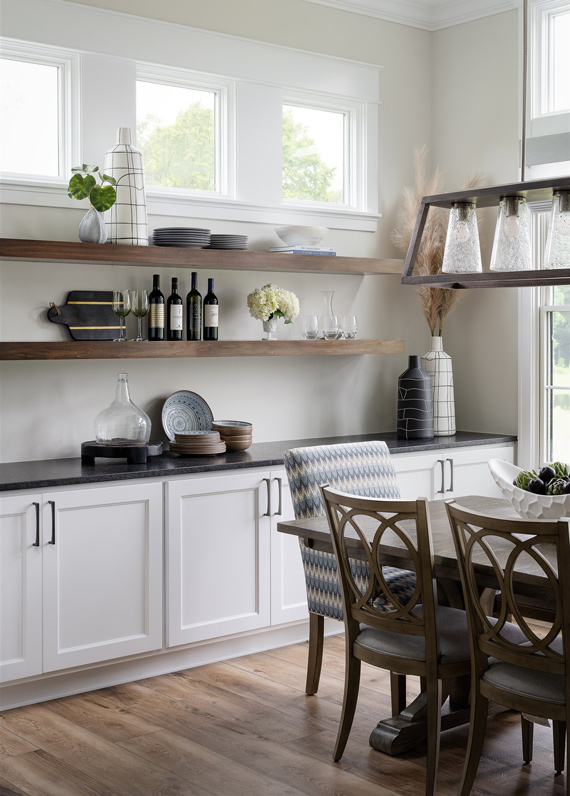
While you may want to add a long dining table that can accommodate a large group, make sure that it doesn’t overwhelm the space and inhibit your guests’ movement. As a general rule of thumb, circular tables work better in smaller areas. Longer, rectangular tables are ideal for larger spaces. To ensure flexibility in larger or longer spaces, select adaptable furniture where you can add leaves to the table to accommodate additional guests.
Luxurious Powder Rooms
While it may be the smallest room in the house, it’s also one of the most used when you are entertaining guests.
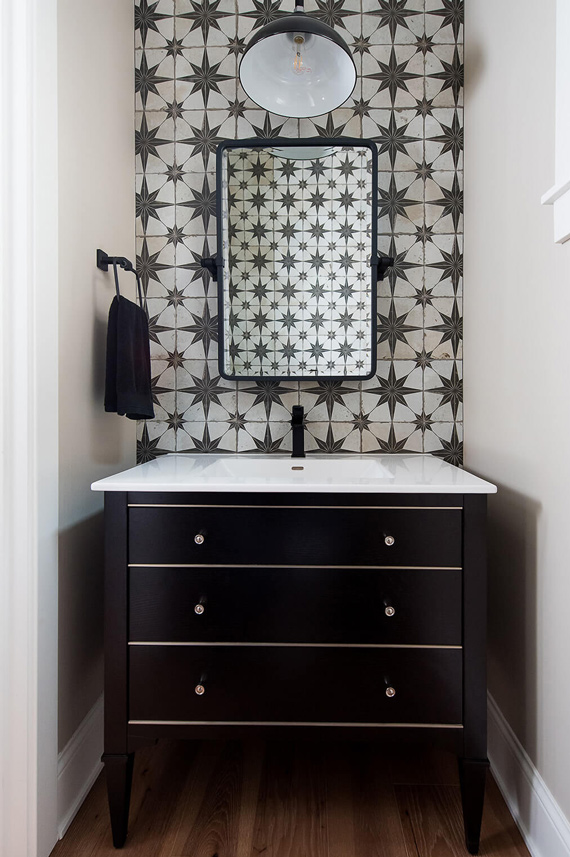
Well-designed powder rooms can make your home feel luxurious and guest-friendly. Play with art, paint palettes, lighting, tiles, fixtures, and wallpapers that make an impact. This is where you can allow your imagination to run wild and let your personality shine through.
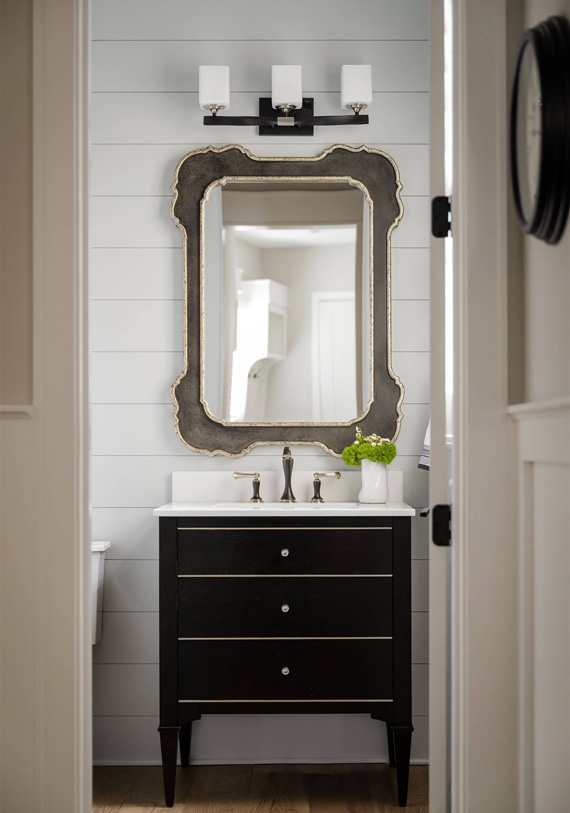
A Home Bar for Happy Hours
Having a home bar shows your guests you care about entertaining. It can be installed anywhere, from a movable bar cart to a dedicated full-fledged cocktail bar. Just like the powder room, a home bar allows for plenty of creative expressions that can leave a memorable impact on your guests.
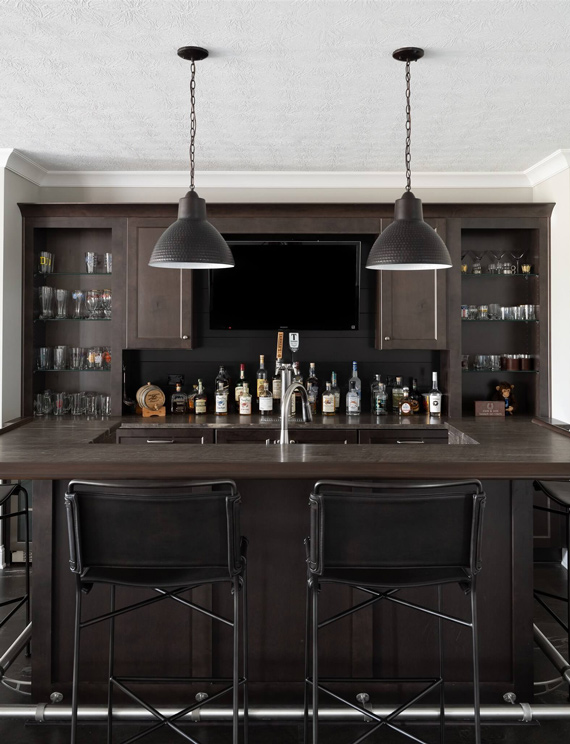
Bold wallpapers, moody paints, and eclectic elements allow your home bar to stand out from the rest of the house and draw guests in to experience a “wow” moment. Add plenty of storage to display your cocktail glasses, champagne flutes, vintage ice buckets, and wine collection. Installing a wine cooler and a stylish decorative sink can make the home bar a self-sustaining, functional unit.
Don’t be afraid to custom the bar to fit your lifestyle. If game day is your thing, don’t forget to install a television for some sports entertainment with your buddies while sipping on your favorite drink! If you are a health nut, consider adding a juicing station or kombucha on tap. If you want it to be kid-friendly, add a soda fountain.
Plan for dim lighting options in the bar area so that it can be transformed from high-energy sports to low-key romance in seconds! Select lighting that creates a soothing mood (cue: velvety jazz music in the background) using decorative pendants, sconces, or shelves with built-in lighting. With thoughtful design and planning, don’t be surprised if the home bar becomes everyone’s favorite hangout spot in your home!
A Multi-functional Basement
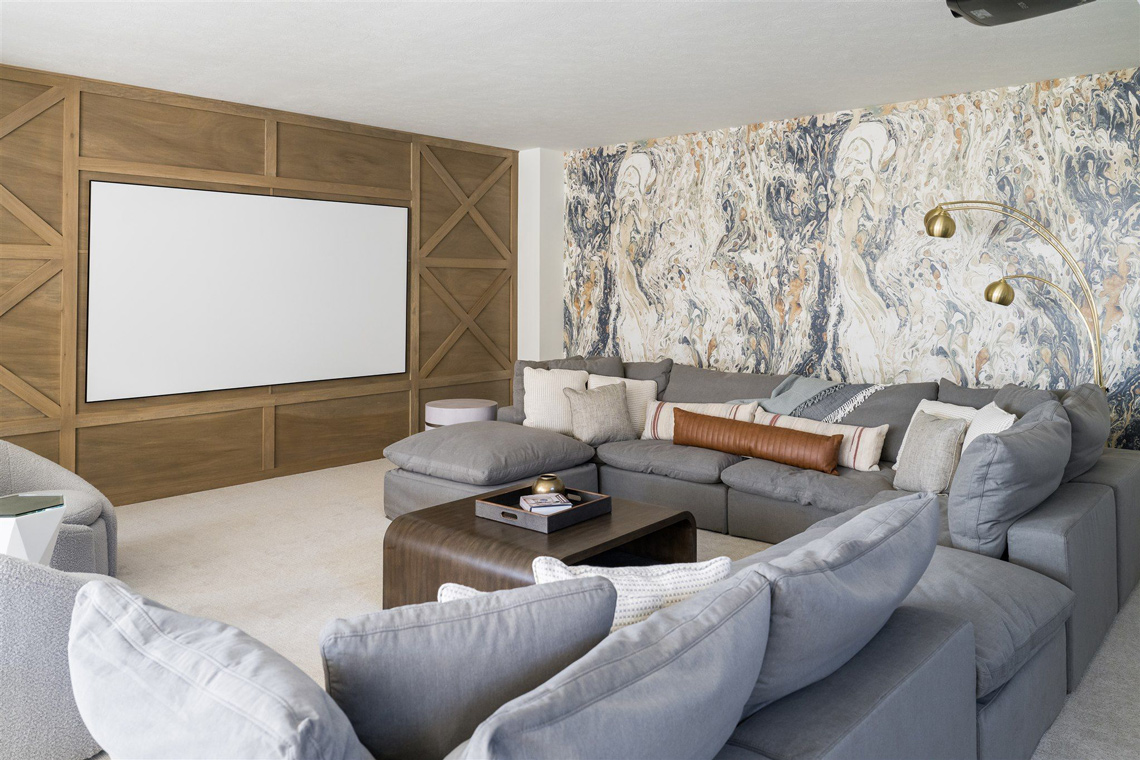
Public service announcement: Basements are not only for storing unwanted junk.
Here are some fun ways to explore your basement’s potential as a fun entertainment space.
If you don’t have the space upstairs for your home bar, the basement might be your best spot for it. Want to host a movie night? Think basement home theater. Looking for action? Install a pool table, foosball table, or air hockey table. You can even have a kids’ play area, so they are safe and well-entertained while the grown-ups hang out upstairs peacefully.
Pay special attention to moisture, lighting, and ventilation while designing basement entertainment zones. Consider using carpet tiles which make it easier to respond to flooding. Ask your interior designer for help to effectively navigate these points.
A Backyard Full of Possibilities
The indoor/outdoor lifestyle has gained immense popularity over recent years, with many homeowners opting to redesign their backyards into functional entertainment-friendly spaces. With a little bit of planning, the backyard can open up a multitude of possibilities as sanctuaries for relaxing, playing, and entertaining.
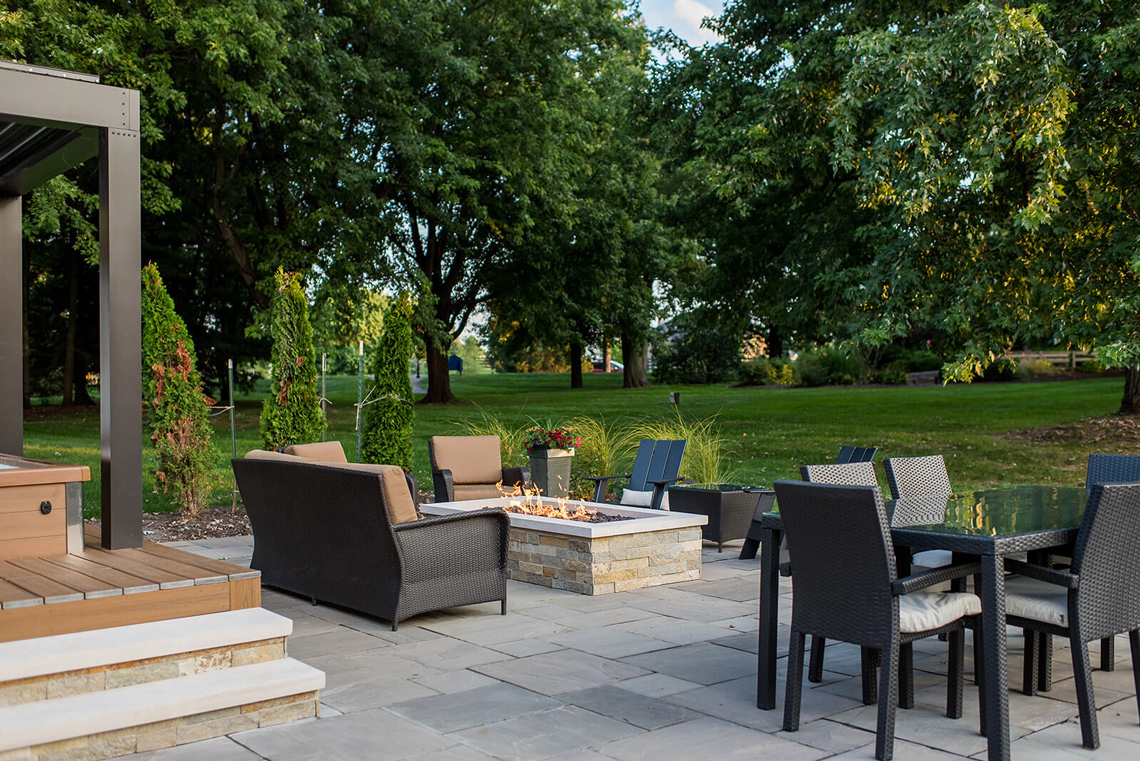
Depending on the weather in your area, consider whether to add flooring that retains heat or keeps cool. Don’t forget to include a high-quality music system and good lighting design if you intend to host at night. And ensure overhead protection from the rain, sun, and other elements with an umbrella, awning, gazebo, or pergola.
Based on your interests and available space, you could add a swimming pool, hot tub, fire pit, outdoor kitchen/barbecue station, dining area, a play area for kids, and quality outdoor furniture.
Become Everyone’s Favorite Host!
A little bit of planning and creativity is all it takes to create an exciting and entertainment-friendly home. With our studio’s thoughtful interior design tips, get ready to become everyone’s favorite host!
If you need assistance designing your home to make it entertainment-friendly, don’t hesitate to reach out to our Carmel, Indiana design-build studio. We can help you plan, design, and execute the home of your dreams on-time and on-budget.

